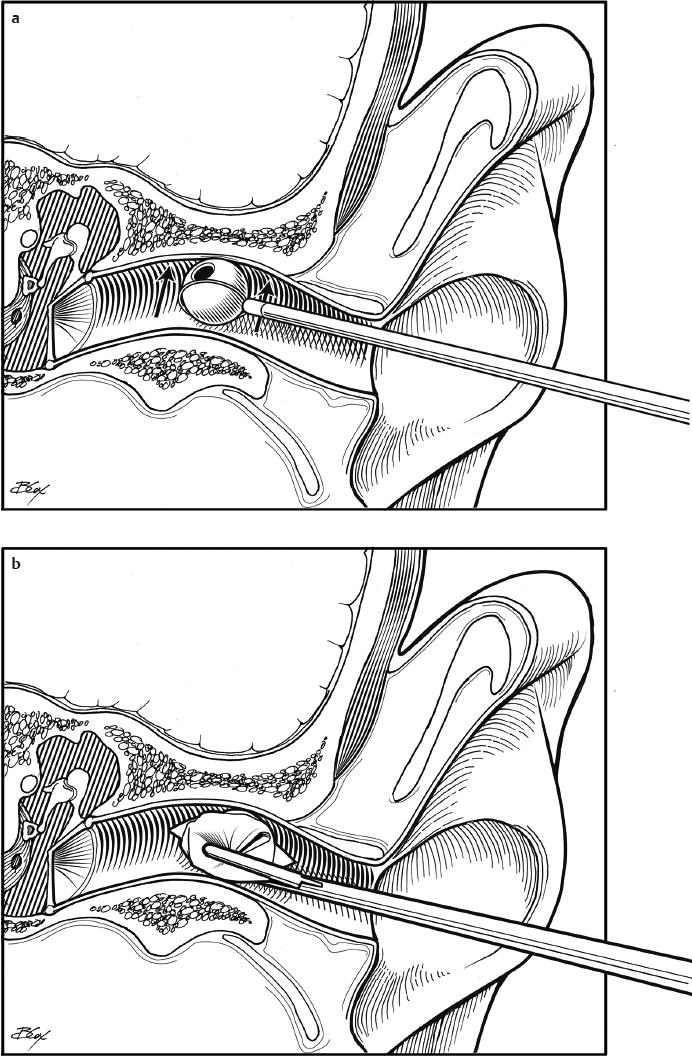Foreign Bodies in the Ear Canal
Foreign bodies in the ear canal are common in children. There is no limit to the variety of items that may require removal, which should be carried out as soon as possible to avoid infection. No anesthesia is required if the child is cooperative or can be completely and safely restrained. General anesthesia is indicated in uncooperative children and when the foreign body cannot be removed without pain or damage to the tympanic membrane or ear canal.
6-1 Removal of Foreign Bodies from the Ear Canal
Indications
Presence of foreign body in the ear canal.
Preoperative Evaluation
An attempt is made to visualize the tympanic membrane distal to the foreign body. This is especially important if one wishes to flush the foreign body out with water. An audiogram may be obtained to determine if there has been damage to the tympanic membrane, ossicles, or inner ear as a result of the foreign body.
Operative Technique
A large speculum is placed in the outer aspect of the ear canal to visualize the foreign body.
Smooth Objects
1. Smooth foreign bodies in the ear canal that do not completely occlude the lumen should be removed with a curette, loop, or blunt ear hook.
2. The loop or hook is gently passed along the ear canal. When possible, during extraction, the object should be lifted gently from the thin-skinned (and more highly sensate) bony ear canal to the thick-skinned and more tolerant vascular strip posteriorly as the object is rolled outward (Fig. 6.1a).
Soft Objects
Soft objects such as cotton or paper are most easily removed with a small, otologic forceps (Fig. 6.1b).
Sharp-Edged Objects
1. Sharp-edged foreign bodies are most easily and comfortably removed with a small, otologic forceps.
2. Rapid removal is important because the sharp edges may scratch the ear canal and make continued patient cooperation impossible.
3. The leading edge should be grasped firmly with a small, otologic forceps and withdrawn rapidly (Fig. 6.1c).
Occluding Foreign Bodies
1. Foreign bodies occluding or nearly occluding the ear canal can be irrigated out. It is not advisable to employ irrigation for tightly impacted organic objects, such as dried beans, as these will only swell and become more occlusive with hydration.
2. The most effective instrument is a 20-mL syringe with a flexible intravenous catheter tip that can be directed to produce a thin, powerful stream of water.
3. Body temperature water is injected along the posterior wall of the ear canal providing a pressure head of water against the drum that forces the foreign body out of the meatus (Fig. 6.1d).




